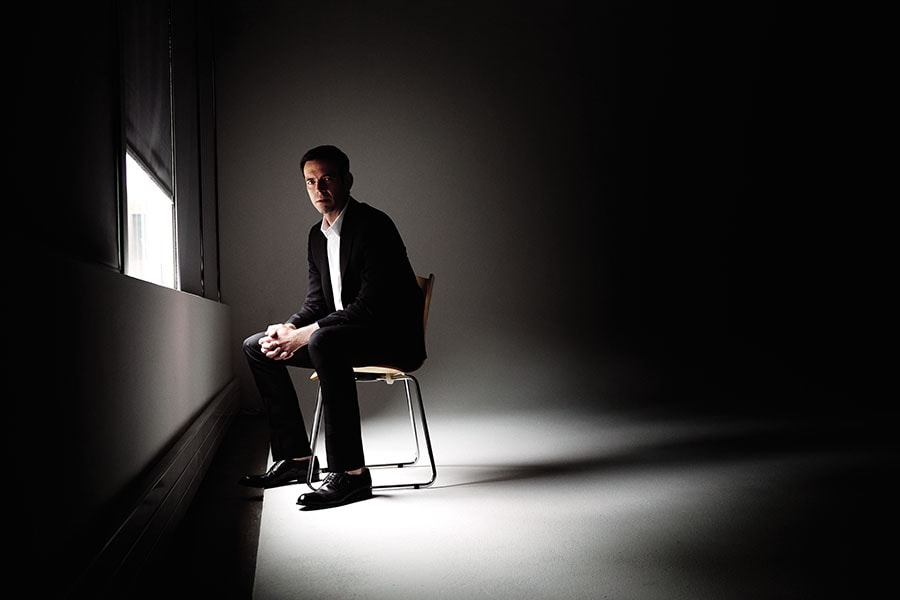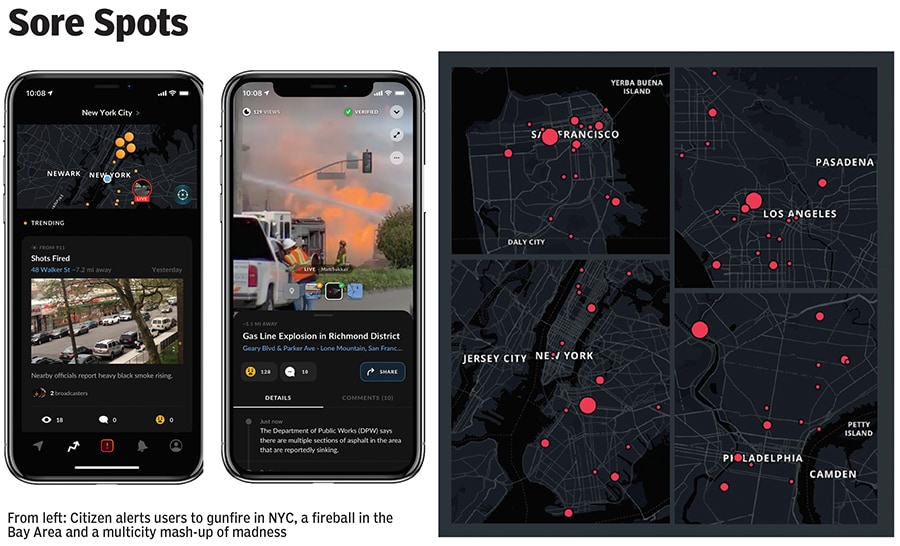
Murders, muggings and mayhem: A live stream of 911 data
While social media usually shows us a filtered and sanitised reality, Andrew Frame, the founder of Citizen, is harnessing 911 data to deliver a raw, live feed of crime and chaos directly to you. Is it the future of public safety or just a 21st-century police scanner?
 Citizen founder Andrew Frame photographed in Manhattan. “We’re giving 911 data to the people.”
Citizen founder Andrew Frame photographed in Manhattan. “We’re giving 911 data to the people.”Image: Jamel Toppin for Forbes; Grooming By : Suzana Hallili, Using : Anastasia of Beverly Hills
With a tap of the screen, a smartphone can quickly deliver most of our basic desires—food, shelter, transportation, entertainment, sex.
Citizen founder Andrew Frame, a former hacker who earned tens of millions moonlighting for a few days at fledgling Facebook, thinks he can add to our phones one more essential human need—personal safety. “We’re all walking around with supercomputers in our pockets that have location technology and live video capabilities,” says Frame. “There must be something more we can do.”
At his startup’s unlisted headquarters in New York City’s Little Italy, young employees sip coffee from Citizen-branded mugs and watch chaos and crime unfold across America. A child is abducted in Philadelphia; a cop car hits a 15-year-old in Baltimore; there’s a stabbing in Los Angeles, a fire in New York.
Citizen’s offices are crammed with desks stacked high with wide-screen monitors and feel like a cross between an air-traffic-control room and a Wall Street trading floor. Analysts in their 20s and early 30s listen to buzzing audio clips through clamshell headphones, their eyes bolted to streaming text chats and flashing city maps. Fingers fly across keys as they toggle between tragedies, blast out safety alerts, share videos and post incident updates to Citizen users who are physically near the morning’s calamities.
“We’ve opened up all this 911 data and given it to the people,” says Frame, who, tall and trim, wearing a baseball cap and a broken-in blue plaid shirt, looks a decade younger than his 39 years. “Before this, you had to go to the police academy to access real-time crime or be a firefighter to get access to fires. The people deserve to have this information too—in real time.”
According to its official blog, Citizen has helped find missing people, rescue abducted children, alert residents to building fires and let users avoid active robberies, armed suspects and shoot-outs. Emergency room doctors use Citizen to anticipate and prepare for incoming patients. News organisations use it to scout breaking stories. Community groups check it to get a quick pulse of problems flaring up in the neighbourhood.
Currently operating in just five cities (New York, Los Angeles, Baltimore, Philadelphia and San Francisco), Citizen has more than 1 million active users. Each week TV news broadcasts more than 100 videos recorded by Citizen users. The company, which launched in 2016 as a crime-fighting tool called Vigilante and was quickly banned by Apple because of safety concerns, now consistently ranks in the top ten of all news apps in the App Store, often higher than CNN, Buzzfeed, the New York Times and Google News. It averages a 4.7 rating (out of 5) from 22,000-plus reviews.
(This story appears in the 30 November, -0001 issue of Forbes India. To visit our Archives, click here.)






